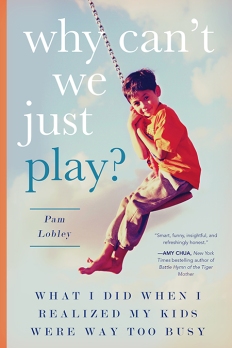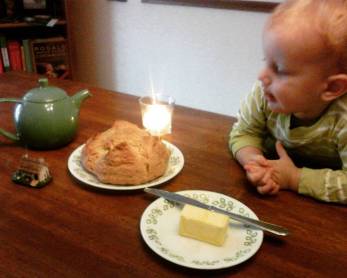Tags
It finally came.

It’s been well over a year that I’ve been trying to read this book. I don’t remember exactly when I became aware of it, but suddenly, it seemed to be everywhere. Everyone was talking about it and throwing out all of their stuff, and then raving about how miraculously their lives had been changed by 50 contractor sized garbage bags and the concept of vertical folding.
Now, I suppose, the moment has passed, but a person who is dependent on the whims of the library system may never be quite au courant with the latest and greatest blockbuster books, but I am going to review this book anyway. I should probably admit up front that I have a huge bias against this book, and had long before I ever had the chance to read it. In fact, I read it mostly so that I could have an informed negative opinion of it, rather than an uninformed one.
In fact, the book was a pleasant read, with some good advice. It puzzles me that someone would need a book (or a consultant) to tell one that one does not need to keep and treasure forever every gift that was given to one, but it is certainly true. I agree that other “rules” (such as, “if you haven’t used it in a year, get rid of it”) are not really helpful, and that no magical storage system is going to solve all your housekeeping problems. (However, I do think that it is also true that the same items present a problem over and over because they do not really have a home.) Her advice that an item needs to be easy to put away, not easy to retrieve is something I will try to remember — it makes sense that you are willing to go to the trouble to get out something you want to use, but much less likely to go to extra trouble to put it away properly.
A lot of the book, however, seemed a bit arbitrary and not really practical, especially for a family. The idea that you would only need to clear out everything once in your lifetime seemed unrealistic. Children grow out of their clothes at least yearly, and even adults have interests and need that change over time. Much of the book seemed overly dogmatic, in a prescriptive and inflexible way, and it seemed to entirely overlook the fact that some people find great happiness in pursing creative pursuits that require “stuff” and make messes — baking, scrap booking, woodworking, sewing.
William Morris said “Have nothing in your houses that you do not know to be useful or believe to be beautiful.” I feel that statement is far more useful than the idea of “sparking joy,” which is, of course, Kondo’s famous concept. (Made the more mystical by the requirement of touching each item before deciding if it sparks joy.) I was particularly intrigued by this concept before I read the book, wondering what mental gymnastics were to be employed to justify many useful objects as “sparking joy.” I suppose, when faced with an overflowing toilet, one might feel that the plunger sparks joy, but it’s just not the same as the way in which my favorite tea cup sparks joy. Later in the book, though, even Kondo herself admitted that certain documents, which must be saved for a time, do not spark joy.
But I want to be clear that I do not have a negative opinion of Kondo herself. She comes across in the book as endearing, if slightly sad. The book really made me want to go back in time so I could snatch the housekeeping magazines she was reading in kindergarten away from her, and shower her with attention and affection and show her how much fun a big mess can be, by decorating cupcakes or making a huge messy glue-y collage with her. Throughout the book, she reveals in snippets why she is so fascinated by tidying and getting rid of material objects, which was far more interesting to me than the actual information on tidying. I don’t mean this in a condescending or pitying way; she seems to have built a career that genuinely interests her and to find great happiness in helping other people. She also seems to be very happy with the home she has created herself, using her method of tidying.
In the end, I think I am more interested in the thousands of readers and clients who have made her so famous. Why do people feel this incredible need for someone else to tell them how to organize their homes, and give them permission to throw things away? (Of course, it is always helpful to have another person’s perspective when cleaning out the closets; but having a friend who can remind you, “I’ve known you for three years and I’ve never seen you wear anything yellow; throw it out” is different from seeking out professional, impersonal advice from a book). How is it a revelation that if you get rid of the things you don’t want or need, your home will be easier to keep tidy and more restful? Or at least, how is it a revelation on this scale? There have always been magazine articles and books about keeping house, but why is this one so vastly popular?
But Kondo is far from the only sage giving out this minimalistic advice. And here, I think, is the issue that bothers me so much about her book and the popular reception of it. People have long sought happiness in the pursuit of “stuff”: shopping, acquiring, collecting, stuff. And while this materialism is still quite popular, there has been a general consensus that this is not what makes people happy. Minimalism is seen as the cure to that: if we get rid of enough stuff, if we downsize our storage and our homes, if we simplify enough, we can achieve happiness. And so, this obsession with minimalism is not really different from materialism; it is just another way of obsessing about stuff. This is the false note underneath all these messages. Stuff cannot make us happy; and the absence of stuff cannot make us happy, either. I daresay that, if we are already happy, we can enjoy “stuff” or we can enjoy downsizing and minimizing our “stuff”; a surfeit or deficit of stuff can make us a little more or a little less happy … but there is no amount of or proper storage of that stuff that will actually make us happy.






